9th February, 2024
The Year of The Dragon – The Cusp of a New Cycle
“January 23, 2012 to February 9, 2013 marked the Year of the Dragon. According to tradition, the dragon is the fifth animal in the Chinese zodiac and symbolizes loyalty — it is noble, gentle, and intelligent, but also tactless, stubborn, and dogmatic. “ New York Public Library
2012 was the year a nascent community from different disciplines and interests – IT engineers, journalists, a pharmacist by degree, a librarian, academics, artists, teachers, students, nature lovers, heritage proponents, authors, film makers, lawyers, the tomb keepers, the former residents of the Kampong at Lorong Halwa, a cartographer, descendants of the stones and the local and international media – emerged, each to play their part in generating awareness that there is this 100 year old municipal cemetery called Bukit Brown, that sits in the center of our island where the stones tell stories of the past and the flora and fauna breathes life into it. And the government wanted to build an eight lane highway that will cut Bukit Brown in half, cleaving apart 100 years of heritage, habitat and history.” It is a rare original WWII site that saw one of the last and fiercest battles on the rolling hills of the land.
Chapter I: How it began…..
The first official engagement with the government under the Ministry Of Development went badly. While the Minister was abroad, his senior civil servants were engaging with civil society on a date to meet him. We wanted a consultation and an opportunity to ask what were the alternatives that had been considered.
By the time a date was found – it took about three weeks – the circumstances of the meeting had changed. First there were “outsiders” those in heritage circles but Bukit Brown was not necessarily a priority. This was not the scenario we had envisaged when we met at the Nature Society’s HQ at Geylang. We came from roughly seven different organisations/communities including one newly minted, all things Bukit Brown, feeling their way in tentative steps through civil society.
The response to the meeting or more accurately the briefing by the then Minister of National Development was an immediate media statement calling for a moratorium on the roadworks signed by The Nature Society of Singapore(NSS), The Singapore Heritage Society (SHS), Post Museum, Green Drinks, The Rail Corridor, API, (paranormal group) and all things Bukit Brown.
Both NSS and SHS had led the email negotiations to pin down a date and an agenda to bring up to the Minister. And the way the emails were going, we knew that was a 99 percent chance, we would not get the meeting we requested. Instead the Minister announced the plans from exhumation to construction of the highway in a PPT, with a concession that the whole process would be documented. A suggestion that a heritage advocate had suggested to the CEOs of URA & LTA when they invited him for a morning prata to ask his opinion. It was indeed a prata flip. Aside from the seven groups, there were heritage bloggers, representatives from clan associations, The Peranakan Association government agencies, , the Preservation of Monuments Board and the National Heritage Board.
The fact that seven groups from civil society including the two most established the nature and heritage societies, issued a statement disagreeing at the haste the decision was reached without genuine consultation, made headline news. Bukit Brown was after all, one of our oldest Chinese cemeteries and the mother of all cemeteries with many remains reinterred there because of major developments where they were first laid to rest. Their burial grounds , had made way for HDB estates such as Queenstown, and so in the past time and time again, the dead had to make way for the living. This was different, an 8-lane highway. In today’s context with climate change a critical and existentialist issue, questions would have been raised why are we encouraging car ownership? Could nothing be done with the then Lornie Road, only eight years in existence ? They were raised then, almost prescient. Back and forth, like a ping pong game, with the ball falling into the government’s side of the table in a staccato volley. We were called naysayers, unsympathetic to motorists and asked to offer solutions to solve traffic jams.
Then the government announced that they had taken on feedback and as a concession to civil society realigned part of the highway as a bridge. It was the most natural of realignments as the previous plan would involve building the highway into a valley. What had happened was that the Nature Society of Singapore had submitted the proposal independently to allow space under the bridge for animals to pass and shady plants that did not need much sunlight, It did save a few graves from certain “death”. The concession by the authorities was much lauded in the media as an indication that the government of the day was not recalcitrant and was responsive. With that, the first chapter of our journey came to a close.
Chapter II Letting Go……
Two communities, Post Museum and all things Bukit Brown moved on and forward, to continue to conduct public guided walks to spread awareness, the latter community branched into themed walks such as World War Two at Bukit Brown hooking up with a war archaeologist from the UK, whose family was stationed in Singapore because of his wife’s career. He had found himself living on the doorstep of the battleground around the black and white houses in Adam Road and later explored the Mount Pleasant black and whites the Japanese had occupied. He started to conduct WWII guided walks detailing battlegrounds that covered the Island Club links into Bukit Brown proper including the names of soldiers who are still missing and their last known locations. Their remains may very well lie under the highway – grist embedded in the concrete – even as their names are acknowledged at the Kranji War Memorial.
Outside of Bukit Brown, Post Museum which is an arts group helmed by a husband and wife team, secured a grant for an exhibition held at SAM, the Singapore Art Museum. They were to curate other exhibitions at the Substation and the exhibition space in Bencoolen Street of La Salle College. And they have taken the Bukit Brown “index” to the USA. Days before the exhumation exercise was to start, they arranged a candlelight remembrance and lit up the entrance into Bukit Brown. That entry into the cemetery is no longer, absorbed now into the Lornie Highway.
Particularly poignant in Post Museum’s first exhibition at SAM was an installation where the names of the deceased who had to make way for the highway were written in chalk on a big wall by volunteers and the public, with a photo collage of some of the volunteers at their special/favourite spot in Bukit Brown. The GOH for the opening was Ms Jane Ittogi, the present First Lady who was Chairman of SAM then. Ms Ittogi was to later be the GOH for a brownie event, – brownies, that’s how the community of volunteers under the banner of all things Bukit Brown are known to the public. It was to be a much bigger event over a weekend with exhibitions of artifacts including a letter written in romanised Hokkien, presentations on nature and heritage, and a screening of a documentary, Light On Lotus Hill about the efforts here to assist in logistics in support of the Sino-Japanese war. It was a collaboration with the Chui Hway Lin Teochew Club. It followed very soon after atBB also curated the first exhibition at The Substation partnering the Singapore Heritage Society and the Sub. In the meantime, an 8 part TV series called “History from the Hills” debuted with Bukit Brown as the central space, telling the story of Singapore from pre colonial times to independence. It was to be dubbed into both Mandarin & Malay in years to come.
Along the way, the new kid on the civil society block, picked an award from the inaugural Singapore Advocacy Awards celebrating the best and most promising in civil society. It was more than encourage, it sealed, resolved.
But it was the international media who took up the gauntlet to source alternative views, different angles to the issue The BBC, CNA, and Reuters had correspondents based here. Brownies were interviewed on air and quoted in print. They sent in questions to the government but they had no comment. The Economist correspondent and the family of husband and wife with one young son and a mangy and lovable Singapore special lived near Bukit Brown. They treated Bukit Brown as their backyard and had joined the brownies in their explorations, “bush bashing “ together in areas tight with above and under growth. He blogged it in The Banyan. A Singapore artist and former photojournalist with the local media and her partner, a Pulitzer prize winner for journalism who flew in from New York for the Singapore Writers Festival, arranged to visit the site with brownies and an academic in tow, and somehow managed to gained access to the storage where the tomb artifacts of exhumed graves were stored and snapped a few choice photos. And so that was how Bukit Brown Cemetery and us found ourselves in The New York Times in a feature article.
Chapter III Gaining Traction & The Message in the Bottle
“People with Chinese zodiac dragons born in 2012 have great vision and ambition. In addition, they are full of patience and persistence. Therefore, they can achieve success in their career field easily. They are bold people full of justice and energy, and they like to help people who are in trouble. They have good interpersonal relationships, because they care about friends carefully. They have a unique style and can give everyone an interesting chat when they are in a low mood.”
We are not sure that accurately describes the community but time has proven we are patient and persistent. An application was made to the World Monuments Fund, to have Bukit Brown Cemetery recognised as a historical and heritage site under threat from an impending highway. We got it, the first site in Singapore to gain this recognition. It was for two years 2013 an 2014. When the news broke, most of us were at a temple dinner.
We held a media conference in Bukit Brown and had fairer coverage. Meetings followed with the National Heritage Board, there was to be no u-turn for the highway, so we simply went with tapping grants from the Board, and the result was a book, WWII@Bukit Brown launched in 2016, an anthology of stories with contributions from heritage enthusiasts who charted the military movements from both sides of the divide. And the brownies themselves shared stories they researched and encountered on the grounds of Bukit Brown. But the heart of the book were stories from the descendants whose young men had been taken away by Sook Ching – and the equivalent of a pogrom. It also included other tragic deaths, the story of how an elder sister and also an aunt, was killed by shrapnel from a bomb, protecting her mother, a younger brother and a niece. She was only 19 years old, with a steady boyfriend. The chapter was called “ Lost Promises” And that was exactly what WWII had wreaked on the island, a palpable loss.
We followed the book with Wayfinder@BukitBrown, a curated trail with directional signage and information boards for graves both prominent and poor in easily accessible areas, by pathways and areas where descendants clustered around a set of tombs had their tomb keepers maintain the tombs of the ancestors.
And sometime after Wayfinder was launched, we witness the sea burial of the unclaimed remains of those exhumed for the highway into the waters with a message in a bottle. By sheer dint of fate, a last minute claim was made on the eve by a friend of the brownies, so one less went into the waters. The same waters where their ancestors once sailed through perilous journeys borne by uncertain winds and currents until they reached safe port in “Sin Chew” a sobriquet popularised by the poet Khoo Seok Wan as the “island of stars”; their first glimpse when they arrived at night, the lights from the vessels, necklaced the island. Khoo was himself affected by the highway. The Sun Yat Sen Memorial Hall made a claim for his tomb. So he is memorialised, ironically by his tombstone.
Chapter IV It Won’s be to Long, now ……..
IT WON’T BE TOO LONG: THE CEMETERY (DAWN & DUSK) by Drama Box staged as part of the Singapore International Festival in 2016 made a profound and powerful impact on the community, and gave the brownies both inspiration and validation.
Every year, we get requests from students doing their final papers for interviews or to be part of the documentary projects from Mass Comms students, and the occasional foreign media looking to refresh their stories of the country they have been posted to, just how does a cemetery tick the boxes of community, of heart, of a shared and painful past, of rebuilding, of the forging of a new found identity ? Like patchwork the different threads go into a blanket of stories, still being added to.
Over the years, we have received requests to make presentations from the tertiary institutions such as from the LKYPP, the soon to end Yale-NUS, to complement the walks. From schools to community and adventure groups, opposition parties and establishment, we walked with them and guided in a truly inclusive space. So the public guided walks continue to be our backbone even through lock down as we secured permission from STB, through an intermediary who believed in our efforts and had a long standing working relationship with STB. Boy, did we need the fresh air and sunshine, as we breathed maskless. But we were closely monitored for safe distancing and numbers.
We are thankful that all restrictions have been lifted. In the two years of covid, Bukit Brown was “under maintained”, so parts have grown lusher than before. Slowly but surely tho’ regular maintenance is being implemented as before. Not unusual now to see groups of three or four workers cutting the grass by the paths. So is life back to “normal” now?
Now on a Saturday, if you are lucky you may encounter a trio dubbed as “The Three Amigos” which includes a tomb keeper and sometimes a young warrior woman carrying kilograms of water for cleaning and it is said she keeps the amigos honest. Together they explore Bukit Brown and venture into the adjoining cemeteries of Lao Sua, Kopi Sua and Seh Ong, every Saturday and stop only for the CNY and Xmas holidays or when they are away for work or family. Sometimes they have “guests” with them, they are descendants who have requested assistance locating their ancestors. The reuniting of families to their roots is what keeps them grounded and going, bush bashing, recalling mysteries they encountered that now have answers, and they grow our compendium of a past lives brought into the present. Enough for another book, but that’s for the future. This year we consolidate.
We have been walking – walking the talk – now in a complete 12 year cycle of the Chinese astrological animal, the dragon, the one mythical creature among the twelve. Perhaps, there is something symbolic in that, that holds hope and a promise we are closer to our mission to protect Bukit Brown for future generations; descendants are returning to look for their ancestors, to connect with their roots, more young people are researching their family history, as always we “connect” them to their roots and to us, then back to you when we share their stories online in our FB groups, blogs or in our presentations. A virtuous and vibrant cycle.
As we welcome the new wood Dragon, we are in the process of working on version II of WWII@BukitBrown, It has been six years and during this time we have uncovered more stories and new material has been shared with us exclusively on the Japanese battle plan under General Yamashita including his annotations on the maps of what was to become Synona-to. We are grateful we have this exclusive through the generosity of a private, independent researcher of all things Japanese, who has focused on the war years from primary sources.
And we are relaunching Wayfinder, so coming your way is Wayfinder II. More tombs, more areas covered, to be launched with instagram interactivity. We hope to launch phase one covering the original Hills 1 and 3 with add ons by June’24. The designers have done the first two focus groups to find out what worked, what didn’t and what kind of content independent walkers are interested in.
If you have visited Bukit Brown and would like to take part in the next focus group, please contact our designers thestudiosonder@gmail.com.
Subject: Wayfinder II
Information needed: Name, Age, Gender, phone number and Status: student, working, not working or retired. The information is needed to ensure a representative demographic. If there are too many applications, the designers will only be able to contact you if you fit the demographic, and apologies to those who could not be accommodated this time and thank you!
As always on our big projects we bring in the Singapore Heritage Society to work with us, and they will be with us on the book and the wayfinder. On that pragmatic note, all things Bukit Brown would like to bring you back to what the Year of the Rabbit had visited upon the community. It was a year of realigning back to face- to- face meetings with the National Heritage Board who organised a focus group discussion with the Singapore Heritage Society, all things Bukit Brown, the Nature Society, descendants, the inter government agencies with oversight over Bukit Brown and educators. There is something afoot that would be announced, shortly .
Chapter V Farewell 2023 and Welcome 2024
In 2023, we count our collaboration with Temenggong-Artists-in-Residence, our most productive, enjoyable too, when we participated in their Zhong Yuan (aka Hungry Ghost) Festival. On opening night, their GOH was overheard remarking, “this is a living museum” as he gazed upon the grounds of the black and white houses, perched on a hill facing the old port, resplendent with grave artifacts above and below. Twice, he remarked “this is a living museum” Minister, there is one right in the center of Singapore, still vibrant and teaming with nature and humanity.
The country was galvanised by the Presidential elections. Perhaps the community had a soft spot for President Tharman, who had visited Bukit Brown when he was Deputy and Finance Minister then, with the documentation team and all things Bukit Brown. It was one stormy and lighting flashed afternoon when his entourage arrived. He and his wife Ms Itoggi took shelter at a home of a brownie. We were gratified they returned after the storm calmed, and went with the original itinerary covering four out of five hills. We finished late as the skies darkened and there was no light left ‘cept from our phones. And he asked us a question, and that question gave us hope.
So we look towards the Year of The Dragon with hope and our gratitude to you, our supportive community, we greet you with our very best “Huat” wishes, may the wood dragon not breathe fire unto himself! It means, continue your conversations, discussions and debates on Singapore Heritage – Bukit Brown Cemetery, but be polite and respectful, less the Dragon boots you out.
Be safe, be healthy, wealth in terms of currency ain’t what it’s cut out to bring. It is the prosperity and good fortune of living a virtuous life, lending a hand to those in need, looking out for your neighbour, to be kind – these are rewards within themselves. This is what we have learnt from the stones of Bukit Brown, and they have many lessons yet to give.
28 October, 2023
by Catherine Lim
It was the April-Jun 2012 edition of Nature Watch, the Nature Society of Singapore (NSS) bi- monthly magazine of hot topics. This one featured the position paper and recommendations for Bukit Brown Cemetery together with a ed-op piece and photo feature titled “Spirit of Bukit Brown” The latter by Ilsa Sharpe, who was on a visit from Perth, which was now home. A revisit was undertaken in the light of news following the announcement of an eight-lane highway that would bifurcate the cemetery.
First Dr. Ho Hua Chew presented some of the reasons for preservation:
ECOSYETEM SERVICES
1) Carbon Sequestration
While our eco footprint is on par with that of first world nations then, “Singapore should take up the challenge of becoming not just a red dot to the world, given that the crisis of global warming has intensified to an alarming degree.”
12 years later climate change is an existentialist crisis. Globally, governments have had to face extreme weather devastation from blistering heat to numb blinding cold. Mitigating climate change requires new sustainable and equitable goals. There is a place for Bukit Brown in this.
2) Natural air-conditioning. If you have ever been to Bukit Brown, then you will have felt what I mean. Nothing more to say.
3) Rainfall sponge. It rains often in Singapore, but it also evaporates fast in our concrete jungle, the wooded areas of Bukit Brown, retains water, and “allow a slower percolation of water into the ground.” This helps prevent or reduce floods.”
Biodiversity
With the formulation of the Master Plan for the Conservation of Nature which was published, NSS had been monitoring the bird life in Bukit Brown.
Their highlights:
94 resident and migrant bird species have been recorded. That’s 26% of 364 bird species recorded under the NSS checklist in 2007. “Impressive” is how Ho describes this figure, given the landscape is mainly woodland.
Nationally threatened birds include the White-bellied Woodpecker (critically endangered and rare). The Spotted Wood Owl and Grey-headed Fish Eagle all in the same category of rare, and critically endangered; 56 species listed in the Red Data Book is 27%, making the cemetery an important site for biodiversity conservation.
Forest Birds – Extended Habitat
Bukit Brown serves as an important habitat and foraging ground for many forest species. Their presence which includes the Malkoha, Asian Fairy Bluebird and Black-headed Bulbul is probably due to over-crowding, especially at the Macritchie Forest part of the Central Catchment Nature Reserve (CCNR)., opposite Lornie Road where Bukit Brown is located. There is also a disconnect with the reservoir and the golf course at Sime Road to the west, and the dam and open ground to the east.
From Bukit Brown it is “a skip and a hop” to the Southern Parks and Ridges. With the cemetery situated south of CCNR, it acts “as a bridge” to include Botanic Gardens to the Istana and Fort Canning. Bukit Brown facilitates as close to a contiguous route for forest birds to the South.
An interesting record of a Large Flying Fox was sighted close to the expressway transect area. A common sight in the past, it is now nationally extinct. It was probably a visitor from Johor or Indonesia. It is a rare sighting which indicates Bukit Brown holds promise for other wildlife apart from the birds.
Since this article was written, there have been sightings by the tomb keepers of the rare Sunda Pangolins as reported by all things Bukit Brown.
To summarise the impact of an eight- lane highway:
The expressway approximately 2 km in length cuts through the area close to MacRitchie Forest, going diagonally across the only big valley with a flowing river, and I would add the most beautiful part of Bukit Brown, with thick woodlands along the shoulders and surround areas on both sides of the valley.
Most of these will probably be wiped out by the construction of the highway. Most of the forest species which used Bukit Brown as a launching pad for foraging will lose their habitat because of the damage and destruction, wreaked. Forest birds are not long-distance flyers. The proposal for the 600 meter “vehicular bridge” although allowing for the river to continue flowing, will with its massive width cast a huge shadow underneath. Deprived of sunlight, the plants will wither and die.
In, 2012:
The Nature Society of Singapore recommends and advocates:
The whole of area of Bukit Brown be designated as a heritage park, with cultural and nature/ecological components integrated into one entity. This also allows for other recreational facilities and activities that are in harmony with the dual-heritage dimension of the park. Such activities include horse riding strolling, hiking, cycling and more. The heritage park should be proposed to the UN as an UNESCO World Heritage Park to draw the tourists – if Singapore ratifies the UNESCO World Heritage Convention. “
On May 15. 2014, having ratified the convention, the Botanic Gardens was inscribed as our first UNESCO Heritage Site.
In 2023, all things Bukit Brown, advocates and recommends that Bukit Brown Cemetery be considered for inscription as the twin to Botanic Gardens, following its success. Also, a cultural site, it tells the story of our migrant nation, embedded with exquisite and simple stonework, with inscriptions that speak of revolution and peace, and represents tangible records of ordinary times of ordinary lives from Coolies to Capitan Cinas, in colonial times.
One of the rare battlegrounds from WWII which are still intact in parts, despite the highway which cut through the last known locations where soldiers were recorded to have fell. There are mass graves from WWII still not uncovered.
Lest we forget.
This will be a fitting remembrance of our war dead, a memorial and a national heritage park.
Remember Where We Came From
“We are Singaporeans together on a small island. We are anchored by our emotional links with family and friends and by our shared sense of our history, and our common destiny. We are not just here, materialised from nowhere, appeared out of a Transformers movie, maybe, we came here somewhere, sometime there was a history to it and it is crucial to remember where we came from, how we got here”
PM Lee Hsien Loong, National Day Rally speech, 2011
~~~~~~~~~~~~~~~~~~~~~~~~~~~~~~~~~~~~~~~~~~~~~~~~~~~~~~~~~~~~~~~~~~~~~~~~~~~~~~~~~~
There is a Chinese saying, ” 飲水思源” translated, “remember the source of the water.”
Horse-riding and strolling, extracted from Nature Watch 2012
Intertwining Guided Walks of History, Habitat and Heritage
It’s like a three- in-one and atBB has recorded over 20,000 participants to such walks.
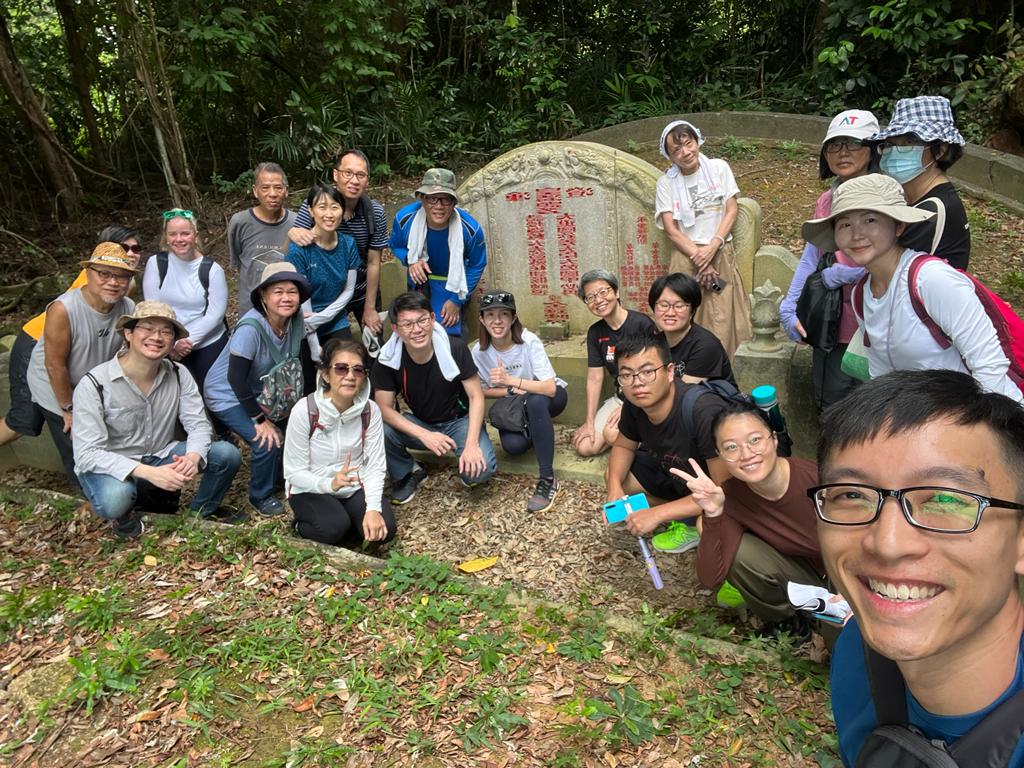
The grave of Tan Kim Ching. Kapitan Cina, Special Envoy in the Siamese court, scion of Tan Tock Seng
This blog post is extracted and adapted from a 2012 issue of Nature Watch. with thanks to the Nature Society of Singapore especially, Dr. Ho Hua Chew. Coming up “ The Spirit of Bukit Brown” by Ilsa Sharp.
Died in the year of the Horse, 19 July 1942 and survived by one son named Kah Bo (嘉謀), Hou Xiu Xi ( 侯秀西 )located at Hill 1 was said to be a good orator and a staunch supporter of the China Relief Fund led by Tan Kah Kee.
He spoke at public rallies and occasions such as temple celebrations to exhort the local Chinese to support the anti-Japanese cause. According to an account, he was beaten to death during the Japanese Occupation for refusing to cooperate with the Japanese authorities.
Remembering Yeo Bian Chuan
by Simone Lee
Qingming or Tomb-Sweeping Day is a traditional festival on the Chinese calendar in remembrance and respect of ancestors. Families visit their ancestors’ ‘home’ – the grave, for a ‘spring clean’ and replenish their needs by leaving ‘worldly’ offerings. This year, the festival fell on the 5th of April and 10 days before and 10 days after is the period where rituals are conducted.
Bukit Brown is busiest at this time of the year. Jams are not uncommon. Throngs of people drive around the historic cemetery to look for their ancestors’ tomb. They carry with them bags of offerings and cleaning tools. Yet, for another year, Yeo Bian Chuan’s grave laid forgotten.
In February 1915, during the Indian Mutiny in Singapore, Yeo Bian Chuan saved 17 Europeans’ lives by hiding them in their home from a bloody massacre. For this he was awarded a commemorative gold medal but died before receiving it.
Today, Yeo Bian Chuan’s tomb is in a state of neglect, not what a hero deserves. We can only hope that soon a descendant would identify him and restore the glory of his ‘home’, one which he deserves.
Read more on Yeo Bian Chuan’s story at Peter Pak’s blog here.
Welcome to a new year, as we cross the threshold into 2015, we look back on the year that has passed.
A is for Advocacy
On 30 August 2014, “The Bukit Brown, Brownies” became the first recipient of the Civil Society Advocate Organisation of the Year Award in the inaugural Singapore Advocacy Awards.

The Brownies with Constance Singam, one of the judges and a highly esteemed civil activist and writer
It was an honour that we could not have dreamed off when we started our journey in January 2012 to raise awareness about the heritage,habitat and history of a 90 year old cemetery, that many say had been “abandoned” and “forgotten”.
Well, here’s the news, they were wrong. And this is why: over 13,000 participants to the guided walks – comprising a demographic from all walks of life, from all ages, from students to community constituency groups, photography enthusiasts, international academics, meet-up groups, and media crews, travel writers, civil servants, docents etc etc; 4 exhibitions over 2 years, the first ever listing for Singapore as a heritage site under threat, under the World Monuments Fund Watchlist 2014, and this year alone, 3 major academic publications. It is a record which speaks for itself, carried by a momentum, best described as organic in nature, and a ground up initiative. When it comes to development in Singapore and how it impacts our history and heritage our sense of identity and place , Bukit Brown as a cause, as a movement, as a place in the memory scape of Singaporeans, refuses to die.
B is for Bukit Brown
2014 was a year Bukit Brown went off-site and “broke new ground” in 2 major exhibitions and inaugural guided walks in the City.
In March, Woon Tien Wei and Jennifer Teo, the husband-and-wife artist-activist team behind Post-Museum curated “The Bukit Brown Index” which was one out of 28 local works featured in an exhibition called “Unearthed” The highlight of their work was a wall on which the names of the exhumed and unclaimed which had to make way for the highway through Bukit Brown, were hand written with the help of Brownies, among others in the heritage and artistic community.
In July, Bukit Brown : Documenting New Horizons of Knowledge was officially opened by MOS (MND) Desmond Lee at the National Library. It represents almost one and half years of research and working the ground documenting some 4,153 tombstones which are affected by the building of a new highway across Bukit Brown, by a team under the leadership of Dr. Hui Yew-Foong, an anthropologist with ISEAS. The exhibition is currently on tour at regional libraries until next year.

The Exhibition at Choa Chu Kang Library (photo Mok Ly Yng) The next and final venue will be at Toa Payoh Public Library. It will open from 4 January 2015 (Sun) till 31 January 2015 (Sat).
In conjunction with the exhibition, All Things Bukit Brown curated 2 special guided walks The Descendants Stories which featured descendants of pioneers sharing their stories of uncovering their roots in Bukit Brown.
Our march into the city was sealed when we partnered the Singapore Heritage Society and co-curated the Bukit Brown in the City and the City in Bukit Brown Walk walks for the Singapore Heritage Festival 2014 in July.
In May, we partnered Jane’s Walks and curated a walk which took participants from the Botanic Gardens to Bukit Brown , bridging the colonial and immigrant narratives of our history.
And in a nod to the Bukit Brown Jane’s Walk, 2 participants Louise and Bridget organised of their own initiative and without any assistance from the brownies, a guided walk for a group of ten of their friends in September. We thank them and hope they will do more!
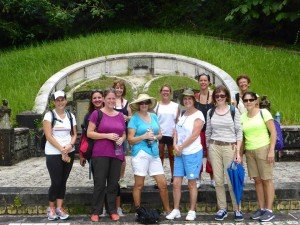
Louise’s and Bridget’s Guided Walk for friends in September inspired by their participating in the Jane’s Walk (photo Louise Ragget)
In September also All Things Bukit Brown, was invited to make a 10 minute presentation in the “Singapore Dreaming” workshop by the Asian Urban Lab as a lead up to a the major conference in 2015 where leading artists, academics, professionals and other thinkers across diverse disciplines will share and explore alternative visions of a Singapore that is sustainable, creative and vibrant.
In 2014, Bukit Brown continued to be featured in student media projects, international news analysis on Singapore’s issues of development and heritage, local TV programmes from “My Grandfathers’ Road” to “Secret Singapore” and its sheer beauty and remembrance of Singapore as as a major battleground in WW 2 was visually showcased in an award winning art house film called “The Canopy” screened at this year’s Singapore International Festival in November.
Next year, watch out as one of the Brownies will guest host a new programme on Channel 5 to introduce Bukit Brown.
After a hiatus and the completion of The Adam Park Project TAPP , the ever popular Battlefield Tours conducted by Jon Cooper returned – once a month every first Sunday – and continue to be over subscribed.
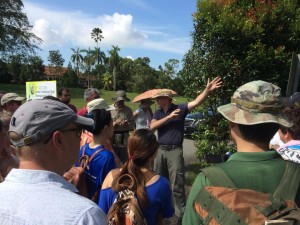
Last Battlefield Tour of 2014 by the lively and knowledgeable war archeologists Jon Cooper (photo Bianca Polak)
In 2014, we conducted more guided walks by private request. Of all the requests for guided walks, the most enthusiastic and frequent requests came from our educational institutions from secondary to tertiary institutions both local and international for “Learning Journeys”
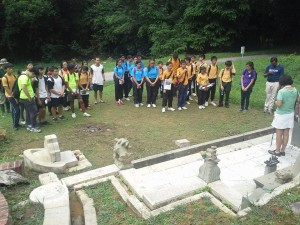
Dunman Secondary School students observing a minutes silence at the grave of Tan Ean Kiam (photo Yik Han)

JNV-Students-at-Ong-Sam-Leong-photo-All-Things-Bukit-Brown
We shifted gears from guided walks and organised on request by Standard Chartered Bank, a Corporate Social Responsibility event which was so successful, the bank has already completed 3 sessions at Bukit Brown of clearing and cleaning selected tombs between May and November 2014. They will make a comeback in 2015.
On site, discoveries continued to be made. This year alone, the two great finds were the founder of Hong San See temple Neo Jin Quee and the family cluster tombs of Lee Kuan Yew maternal ancestors.

Zaobao report on finding Neo Jin Quee, founder of Hong San See Temple, May 5, 2014
On site, as we have done, for every year since 2012, we celebrated NDP ’14 , Our Bukit Brown, Our People with both gusto and with sadness in an landscape which has changed and will continue to change as the road works encroach slowly but surely .
On site, sometime in November, while we were not looking, the ole raintree was chopped down and overnight it was gone, our consolation comes from our shared memories.
C is for Community
It has been the heart of community and your passionate support which has sustained, encouraged and uplifted the Brownies over the past 3 years. A community which includes academics, journalists, artists, writers, descendants, tomb keepers and fellow activists in heritage and the environment. We single out for our gratitude the Singapore Heritage Society and the Facebook Group Community Heritage Singapore- Bukit Brown Cemetery.
When a call was made for feedback to be given on the URA Draft Masterplan 2013 in December of the same year, we received some 30 responses which were sent to the Ministry of National Development. You wrote on how important it was to preserve Bukit Brown for future generations, for the environment, as a space important to root Singaporeans to the land and for the sharing of collective memories.
In June 2014 the Masterplan was gazetted with no changes to plans for Bukit Brown. But if you thought, your efforts were for naught, let us reassure you, it was noted and it did make a difference in paving the way for better engagement on the future of Bukit Brown. We have only just began.
In 2014, three major academic papers on Bukit Brown were published
We thank : (Drs) Natalie Pang and Liew Kai Khuin “Archiving the Wild Archivists”, Dr Terence Chong (Singapore Heritage Society) “Bukit Brown municipal cemetery: Contesting Imaginations of the Good life in Singapore” and Prof Huang Juanli ” Resurgent Spirits of Civil Society Activism: Rediscovering the Bukit Brown Cemetery in Singapore” for their comprehensive and thoughtful and thought provoking papers.
To the descendants who have trusted us with their stories, we salute you.
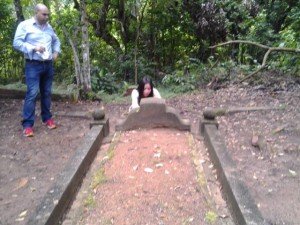
Gillian Lim-Mendy with her husband flew from London to pay their respects to their Grandfather Lim Hock Seng for the first time in December. Her story can be found here (photo Catherine Lim )
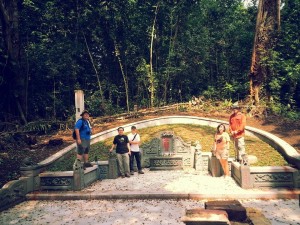
Brownies visit the grave of Yap Geok Song, newly renovated after descendants contacted Peter Pak to show them their ancestor’s tomb after reading his blog
And a special mention and shout out to Zaobao journalist Chia Yei Yei and the heritage reporters of Zaobao for the breathe and depth of coverage they have given to all things related to Bukit Brown from pioneers to Brownies in 2014.
The Chinese daily capped off the year in recognition of the part the Goh Brothers have played in uncovering our historical and heritage gems by headlining them among the paper’s Personalities of 2014.
We ended 2014 on site, in the last guided walk of Bukit Brown for the year with some 50 people turning up.
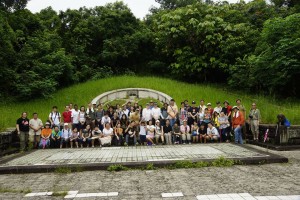
Collections, Recollections and Our Favourite Moments, last guided walk for 2014 on Sat, 27 Dec (photo Yeo Hong Eng)
50 is of course a significant number as we cross the threshold into 2015. 2015 is SG50, a year of national celebration of 50 years of our history and achievements. But what can we look forward to in a landscape which will continue to be pockmarked and drastically changed by construction work on the development of a highway?
We will keep calm and carry on, engage constructively, walk the ground, walk the talk, continue to be excited by new discoveries and we will – and this is a clue – write a new chapter on our past and take it into the present. In short, we will continue to honour our heritage, habitat and history, and remember those who laid down their lives in memoriam for without them, SG50 would not be possible.
“Lest we Forget”
We remember Victoria Tan and Edmon Neoh-Khoo
RIP
Compiled by Catherine Lim
The Story Behind Peg 2906
by Norman Cho
How many of us believe in the unexplained? There are reasons why certain things happen unexpectedly. But are we receptive enough to take the cue from such signs? One recent account was of tomb 481 which was pegged 2906 at Bukit Brown Cemetery, slated for exhumation to make way for the 8 lane highway due to slice the cemetery in half by 2017/
A post about the Ee Hoe Hean Club in the Facebook page of Heritage Singapore – Bukit Brown Cemetery, spurred me to do a search on my granduncle, Mr Tan Kay Tiang (ie) the husband of my paternal grandmother’s second sister, Mdm Yeo Say Neo. Grandmother had once told me that he worked for an exclusive millionaires’ club called the Ee Hoe Hean Club. No details of the position which he held or the period where he was under their employment were given.
Out of curiosity, I did a Google search over the internet and found to my astonishment that he was buried in Bukit Brown Cemetery and that his tomb was marked for exhumation with the peg number 2906.
I made a few enquiries and discovered that the tomb had yet to be claimed and that it was due for exhumation in only three weeks! I tried to contact the deceased’s three grandchildren unsuccessfully to make a claim. They are in their fifties and sixties and I sensed their reluctance. They probably have their reasons to decide not to do anything about it.
Looking back, I realised that discovering his tomb just three weeks before the exhumation was no mere coincidence! Possibly, he was trying to reach out to someone to handle his exhumation and to relocate him during the desperate final few weeks. I felt very uncomfortable if I did nothing about it and so I decided to claim the tomb on behalf of the family. To make sure that I had identified the correct tomb, I verified the name of his only child on the headstone – 月娘which corresponded with the name of my late aunt, Guek (Guat) Neo. I found a newspaper article in the online digital archive (Newspapersg) which confirmed the identity of the tomb.
Family accounts has it that he died due to septic wound on his foot caused by a nail which he accidentally stepped on. He had concealed nails on the ground along the exterior wall of his house at Neil Road to deter thieves. The irony was not lost on me that these nails were what caused his death, A newspaper report in The Straits Times, 19 June 1938, “Nail Causes Man’s Death” returned a verdict of misadventure. The date of death on the tomb was 10 June 1938.
Tan Kay Tiang married my grandaunt, Yeo Say Neo, in 1923 at his family home in Neil Road. He was 39 and she was 27. During those days when people commonly married in their teens, they were considered an old couple. The couple stayed together with Kay Tiang’s widowed elder sister and his mother.
My grandmother recalled visiting the 3-storey townhouse and was intrigued by the many carpets that she saw on each floor. The couple had their first and only child, a daughter, Guek Neo, in 1925. He was a doting father who was known to piggy-back his daughter till she was nine or ten. The maid would take over after he was tired. As a child, my aunt was thoroughly spoilt and there was an account where the maid was made to walk the dark alley to buy her favorite char siew pau for her supper.
After her father’s death when she was twelve, Guek Neo’s life took a drastic change. She had become a sensible young lady. The house was sold several years later and Guek Neo was arranged to be married to a Baba named Robert Chia, the son of a well-known nyonya medium in the 1920s and 30s who was known by the name “Ah Lian Potong Lemo” She could predict fortunes by reading the sliced limes.
Mrs Tan Kay Tiang (Yeo Say Neo) was the ideal wife and homemaker. She excelled in cooking and sewing. She was soft-spoken and mild-tempered. She did not gamble and hardly stepped out of the house. The maid would run all the family errands and do the marketing. To supplement her living expenses after the death of her husband, she made nyonya kueh which her maid would take to the coffee shop at Joo Chiat Road to sell. She eventually had to let her maid go as she could no longer afford to keep her but the maid was reluctant to leave her and stayed on for a few more years.
***
A footnote:
Every tomb is a repository of personal stories of the family that was left behind
Moving forward 76 years later, I had made a claim for the tomb to be exhumed on 14 July 2014 and the remains to be re interred at Block E0116-202 in Choa Chu Kang Columbarium. It would be easier for me to visit since most of my relatives are placed there. He was buried in the traditional Chinese coffin which was relatively intact and had several funeral artifacts which included miniature clay kitchen utensils and two pieces of circular glass which I suspect could be reading glasses – one concave and the other bi-convex.
About Norman Cho:
Norman Cho is a regular contributor to atBB and guest blogs about his search for his roots and Penanakan material culture. He is the founder of the facebook group Peranakan Material Culture
You can find out more about Norman’s search for his roots here and here and posts about Peranakan culture here and here.
Today marks the 70th anniversary of Lim Bo Seng’s martyrdom (29 Jun 1944)
An excerpt from Singapore war hero Lim Bo Seng’s diary:
“My duty and honour will not permit me to look back. Every day, tens of thousands are dying for their countries. You must not grieve for me. On the other hand, you should take pride in my sacrifice and devote yourself to the upbringing of the children. Tell them what happened to me and direct them along my footsteps.”
Family members attended a remembrance ceremony organised by Changi Museum, at the Kranji War Cemetery this morning.
Read the Today report here
Tan Ean Teck (1902-1944)
According to “Biographies of Famous Personalities in the Nanyang,” Tan Ean Teck came to Singapore from Tong Ann, China at the age of 16. He worked for about four years in his brother’s (Tan Ean Kiam) company before striking out on his own, setting up his own rubber trading firm.
He was a strong supporter of the anti-Japanese war effort in China, and contributed to charitable causes in both China and other lands. He also contributed to the Hokkien Huay Kuan, the Chinese Chamber of Commerce, the Tong Ann District Guild, as well as many schools and social institutions,
But Tan Ean Teck’s life was tragically gunned down when he became a casualty of WW 2. On 19 April, 1944, the MPAJA (Malayan People’s Anti-Japanese Army) ambushed officials of the OCA ( Overseas Chinese Association) en route to visit the Chinese settlement of Endau in Johor.
A member of the OCA convoy, captures vividly what happened:
Tan Ean Teck’s body was taken back to Singapore and 4 days later on 23ed April , he was buried in Bukit Brown, close to his brother Tan Ean Kiam. He was 42 years old.
Prologue: Endau and World War II
In August 1943, in order to ease the food shortage problem in Singapore, the Japanese authorities mooted the idea of setting up new settlements outside Singapore and encouraging Singaporeans to relocate to these settlements to cultivate the land there. These settlements were planned to become self-sufficient in food supply. A settlement was created for Chinese settlers at Endau in Johore. (Source: Iinfopedia)
From Alex Tan Tiong Hee
My understanding, based on my late father’s (Tan Yeok Seong) account:
The OCA was not popular with the anti-Japanese elements that went underground to survive. Those living an open unconcealed life in public were natural targets for the Kempeitai who sought revenge against the Chinese, hence the pogrom.
The pacification of Japanese antagonism was the OCA’s raison d’etre and which had to be traded by the raising of $50million from the Chinese community as a gift for the Japanese emperor’s approaching birthday. This being done, the persecution or ‘sook ching’ then ended.
The communist terrorists were enterprising enough to merge with the anti-Japanese underground group to form the MPAJA. They accused the OCA as collaborators and monitored the Endau Project. Their opportunity came when they ambushed and fired at a convoy killing all except Lee Choon Seng who was Vice President of the OCA.
Extract from Collaboration during the Japanese Occupation : Issues and Problems focusing on the Chinese Community by Han Ming Guang (Hons thesis for history):
Even though Endau was administered by the Chinese, the fact that it was sponsored by the Japanese military and established by the O.C.A whom the MPAJA saw as an organisation of collaborators, meant that the Chinese administrators that administered the settlement were now targets for the MPAJA guerrillas. The MPAJA guerrillas ambushed the O.C.A officials that were on their way to visit Endau and in the process wounded Mr Lee Choon Seng, the chairman of the Overseas Banking Corporation. They also managed to kill Mr Wong Tatt Seng, who was in-charge of maintaining peace and order within the settlement, along with other Chinese administrators who were also living in Endau at the time of the attacks.
While it was clear that the MPAJA viewed the members of the O.C.A as well as the Chinese leaders of Endau as collaborators and traitors, in general the people who were living in Endau did not share those views. They understood that the Endau plan was conceived by the O.C.A and Mamoru Shinozaki in order to save Chinese lives from the dreaded Kempeitai , by giving the Chinese community a piece of land in Johore, for them to live separately and free from the Japanese military.
Pat Lin on life in Endau:
According to my parents, Maggie Lim and Lim Hong Bee (H.B. Lim) both of whom were actively involved with the MPAJA in the Endau settlement (Yes, I was there too) there were people in the OCA who were what we may today call double agents. They included some very prominent local people who on the surface professed to be anti-Japanese, but who were informers who were usually rewarded by the Japanese.
As with the French resistance, it was a very difficult time as people all lived under a climate of uncertainty as to who was about to betray them to the Japanese. My mother also had her suspicions as to those who carried out the covert assassination of informers.
She has a vivid story of having to deal with someone who was brought into the Endau clinic (she was the Endau doctor) one evening with a bullet in his head. As a physician she was duty bound to do everything to save him. She was filled with the reluctance to do anything as it was known by the Endau leadership that he fed information to the Japanese that led to people being taken away for execution or disappearing suddenly. Possession of any sort of weapons was punishable by death, but people like my father possessed hand guns that they somehow received from some source and were very carefully hidden.
Endau was located in healthier environs and there were more people who managed to make a go of farming. The staples were kangkong and ubi kayu. My little family brought chickens up from Singapore piled up In chicken coops on top of a lorry. Some of them ran off into the jungle, and others fell prey to wild animals. Wild animals including roaming tigers were a real threat.
The first year in Endau and Bahau were particularly bad before the first harvests. OCA members from Singapore would make periodic visits with whatever they could scrounge up including medicines. Some within the community tried being entrepreneurial by trying to sell black market food stuffs they somehow managed to obtain. Mom recalled being so hungry from having to work and nurse me but my father being ever the man of high ethical standards refused to allow the purchasing of black market goods.
An Epilogue on a Life Miraculously Saved
The metal badge of the OSA worn on the chest, deflected the bullet that could have fatally wounded the Vice President of the OSA, Lee Choon Seng. He believed he was saved for a reason and his life took on a spiritual quest in the aftermath of war. Lee Choon Seng subsequently founded the Poh Ern Shih to dedicate merits to people killed during the occupation. His grandson transfromed the monastery into Singapore’s first green temple.
***********
Editor’s Acknowledgement : This blog post is a compilation of first hand accounts and research from the Heritage Singapore Bukit Brown Facebook Community.
by Ang Yik Han
Cheok Hak Leng (石学能) died in 1929 at the age of 34. His father was a rice merchant and he studied in Chong Cheng School. After leaving school, he founded Seng Cheong Sawmill with two other partners. He was the firm’s general manager.
It was mentioned in an account of his life that he joined the Tong Meng Hui in Singapore (Lim Nee Soon’s list of Tongmenghui members does not include his name, unless he joined under a pseudonym). Given that the Chinese Revolution took place in 1911 when he was only 16, he would have been a very young member.
On his tomb, a pair of couplets.
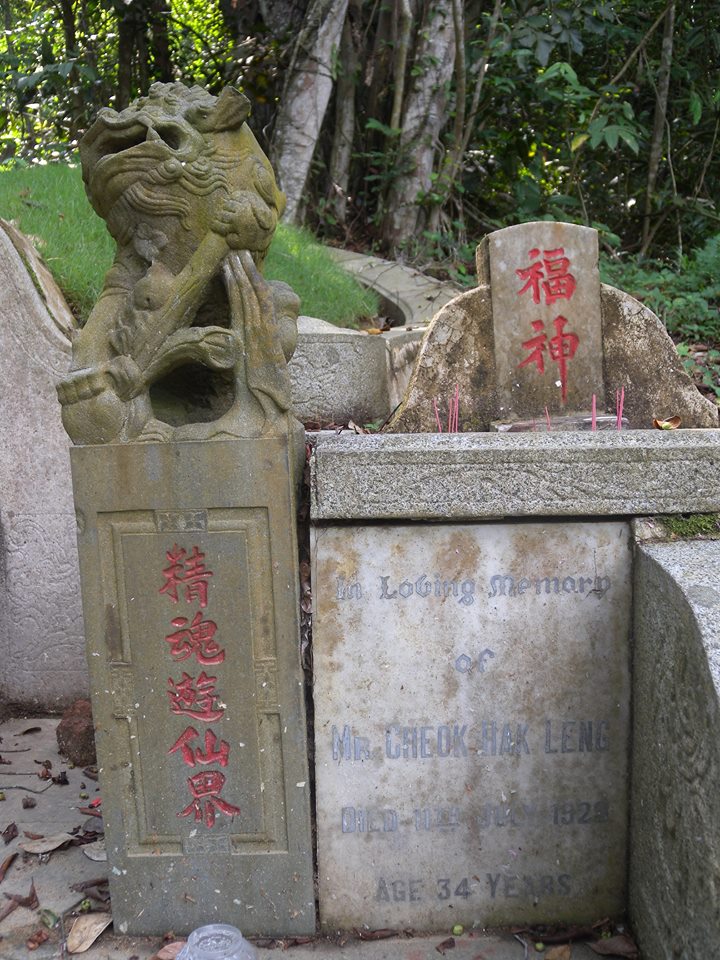
精魂游仙界 (photo Yik Han)
精魂游仙界
The immortal spirit wanders about the heavenly realms
金尸埋俗尘
The corporeal body lies buried in the mortal world
A footnote:
8 December 2012
Straits Time: Life!
Meaningful to find ancestors’ tombs
Melissa Sim’s article Finders Of Long- forgotten Tombs (Sunday Life!, Dec 2) was unique and interesting.
I had long wanted to find the tomb of my grandfather, who died in 1929 and was buried at the Bukit Brown cemetery. When the Land Transport Authority announced its plans last year to build a highway that will cut through the cemetery, my interest was reignited.
Armed with a copy of the register of burials from the National Archives, I made my way to the cemetery full of hope of locating my grandfather’s grave. How wrong I was. Bukit Brown is a massive place with no proper signs and directions, making it difficult to find ancestors’ tombstones.
It was during my second trip there in January this year, after a futile attempt the previous month, that I discovered not only my grandfather’s tomb but also those of his two brothers adjacent to his.
All this was made possible through the assistance of Mr Raymond Goh, who was featured in Ms Sim’s article.
Mr Goh said: “This is my country, it’s worth fighting for because my ancestors are here.” I echo that statement.
Bennie Cheok
—————————-
NB: Bernie Cheok is a grandson of Cheok Hak Leng
(The tomb is at Hill 3, up the track after Tan Chor Lam’s grave)
This chronology of the Japanese invasion was compiled by James Tann, a heritage blogger, in the lead up to the 72nd anniversary of the fall of Singapore on 15 February, 1942.
Feb 8, 1942.
The Japanese Army invasion of Singapore Island begins with the crossing at Lim Chu Kang.
February 9, 1942.
Having landed the night before along the Lim Chu Kang coast, by the afternoon of 9th Feb, Tengah Airfield was in the hands of the invading Japanese Imperial Army.
Also on 9 Feb, the Japanese Army opened a 2nd battle front by landing the Imperial Guards Division at Kranji and the Causeway. This Division was to move east heading towards the Sembawang & Thomson regions.
The Jurong-Kranji Line – 9th February, 1942.
The Allied forces formed a futile blockade called the ‘Jurong Line’ stretching east of Tengah Airfield, through Bulim to the Jurong River (where Chinese Garden is today) to try and contain the Japanese forces within the western sector of Singapore.
By evening of 9th Feb 1942, the Jurong Line had collapsed completely due to miscommunication. The main Australian 22nd Brigade retreated, resulting in a domino effect leading other units to retreat as well.
Luckily for them, the Japanese forces did not press their advantage as they had to wait for reinforcements and logistic supplies to follow up across the Straits to continue the invasion.
You can also read how a jungle dirt track saved the lives of 400 soldiers by James Tann here
10th Feb 1942.
The capture of Bukit Panjang and the massacre at Bukit Batok.
With the overnight collapse of the ‘Jurong Line’ blockade, the Japanese 5th Division easily manoeuvred down Choa Chu Kang Road and overpowered the defences by the Argylls & Sutherland Highlanders and the Hyderabad Regiment at Keat Hong. Pushing them back all the way to Bukit Panjang Village. It was the first encounter with Japanese tanks in Singapore by the British.
By the early afternoon, Bukit Panjang Village had fallen to the Japanese. Some British units managed to escape through the farmlands of Cheng Hwa and eventually followed the water pipeline down to British lines near the Turf Club region.
Intending to re-establish the ‘Jurong Line’, the British High Command despatched 2 battalions from Ulu Pandan to Bukit Batok (West Bukit Timah).
X Battalion made it way to 9ms Jurong Road (opp today’s Bukit View Sec Sch), while Merret Force lost its way and camped at Hill 85 (Toh Guan Road today).
The Japanese 18th Div coming down Jurong Road encountered both X Battalion and Merret Force during the night. X Bn, caught totally off guard, was annihilated and lost over 280 men, while Merret Force had half its force killed in the ambush.
The Japanese Commander, Gen Yamashita, had ordered both his 5th and 18th Division to take Bukit Timah Village and Bukit Timah Hill by the 11th Feb. Thus, both units were in a frenzied rush to capture the strategic high point.
By midnight of 10th Feb, Bukit Timah Village was ablaze and effectively conquered by the invasion force.
Photo credits: Australian War Memorial
1. Japanese soldiers at Bukit Timah Hill
2. Japanese Type 95 HaGo Light Tanks in Bukit Timah Village
11th February 1942.
The Fall of Bukit Timah Hill and the Tragedy at Sleepy Valley.
By the time Gen.Yamashita’s army crossed into Singapore, he was critically short of supplies, fuel, ammunition and even food for his troops. His strategy was thus to conduct a tropical blitzkrieg – ‘hit them fast hit them hard’ – to capture Bukit Timah. It being the high point for observation also held the British ammunition, food and fuel depots which he coveted.
To raise morale of his troops, he set Feb 11 as the day to capture Bukit Timah Hill. The significance of Feb 11 was that it was the Japanese Kigensetsu, the day they celebrate the ascension of the 1st Emperor and the founding of the Japanese Empire. The task was assigned to competing 5th and 18th Divisions with untold glory going to the unit achieving the objective first.
By midnight of 10th Feb, both units had already reached Bukit Timah Village and the resultant battle against the British defenders set the entire region ablaze. The British retreated and held their line at Reformatory Road (Clementi Road)
By early morning of the 11th, the Japanese had secured Bukit Timah Hill.
Meanwhile back at Bukit Batok…
By the morning of 11 Feb, the senior commander of 15th Brigade, Brigadier Coates, who was to lead the re-taking of the Jurong Line, knew that the Japanese had surrounded his position. He cancelled the order and proceeded to retreat, together with the Special Reserve Battalion, back to allied lines at Ulu Pandan.
Forming 3 columns consisting of 1500 men from the British, Indian and Australian units, they proceeded from Bukit Batok to cross an area called Sleepy Valley.
Unknown to them, the Japanese 18th Division was already waiting to spring their trap on the British soldiers.
What happened next is a seldom mentioned debacle which actually had the highest number of casualties of any skirmish within Singapore during the war. The firefight that took place at Sleepy Valley took the lives of 1100 allied soldiers out of the 1500 who entered that valley of death.
Throughout the day, the British sent in reinforcements to try and re-take Bukit Timah. However, both Tomforce and Massey Force could do little to dislodge the Japanese.
When Bukit Timah Hill fell, Gen Percival moved his HQ from Sime Road to Fort Canning. The fear of the approaching Japanese Army also led them to destroy the infamous 15” Guns at Buona Vista Camp at Ulu Pandan that morning. It was a sign that things had come to bear…
12th Feb 1942.
Yamashita’s Ultimatum.
Tomforce’s attempt to re-take Bukit Timah and Bukti Panjang ended in futility. Unknown to them, they were up against the battle hardened Japanese 56th and 114th Regiments of the 18th IJA Division, Yamashita’s crack troops, who had fought all the way from China.
By the morning of 12th Feb, the British lines were being pushed backed.
Tomforce fell back from Reformatory (Clementi) Road to Racecourse when the Japanese overran the supply depots at Rifle Range. By the end of the day they would retreat all the way back to Adam and Farrer Road.
By then, Gen Percival had redrawn the defence line.
Massey Force would protect the waterworks from Thomson Village to the east of the MacRitchie golf links, where the former HQ at Sime Road was.
Gen Heath’s British units would fall back from Nee Soon, having abandoned the Naval Base, and form the line from Braddell to Kallang.
In the west, the Australians fell back from Reformatory Road to Holland Road (Old Holland Road), while the 44th Indian Brigade formed the line from Ulu Pandan to Pasir Panjang. Sporadic fighting occurred throughout the day along the line.
Elated with the capture of Bukit Timah, Gen.Yamashita was still faced with logistical problems including a critical shortage of ammunition. He knew he wouldn’t be able to last out in a war of attrition and thus resorted to his plan to bluff the British into surrendering, by dropping ultimatum notes into the British lines.
“To the High Command of the British Army, Singapore”
I, the High Command of the Nippon Army have the honour of presenting this note to Your Excellency advising you to surrender the whole force in Malaya.
My sincere respect is due to your army…bravely defending Singapore which now stands isolated and unaided…..futile resistance would only serve to inflict direct harm and injuries to thousands of non-combatants….Give up this meaningless and desperate resistance…If Your Excellency should neglect my advice, I shall be obliged, though reluctantly from humanitarian considerations to order my army to make annihilating attacks..”
(signed) Tomoyuki Yamashita”
Getting no response to his ultimatum message, Yamashita sent his units on probing incursions along the line.
These took place mainly at Sime Road and Pasir Panjang near Normanton.
He had no intention to enter the city as he knew he did not have the resources to fight a street to street battle.

Major Bert Saggers was CO of the Special Reserve Bn that was ambushed at Sleepy Valley. He survived and made his way to Ulu Pandan where he found only 80 of his 420 men alive but all his officers killed. (photo Ian Saggers, Perth Australia )
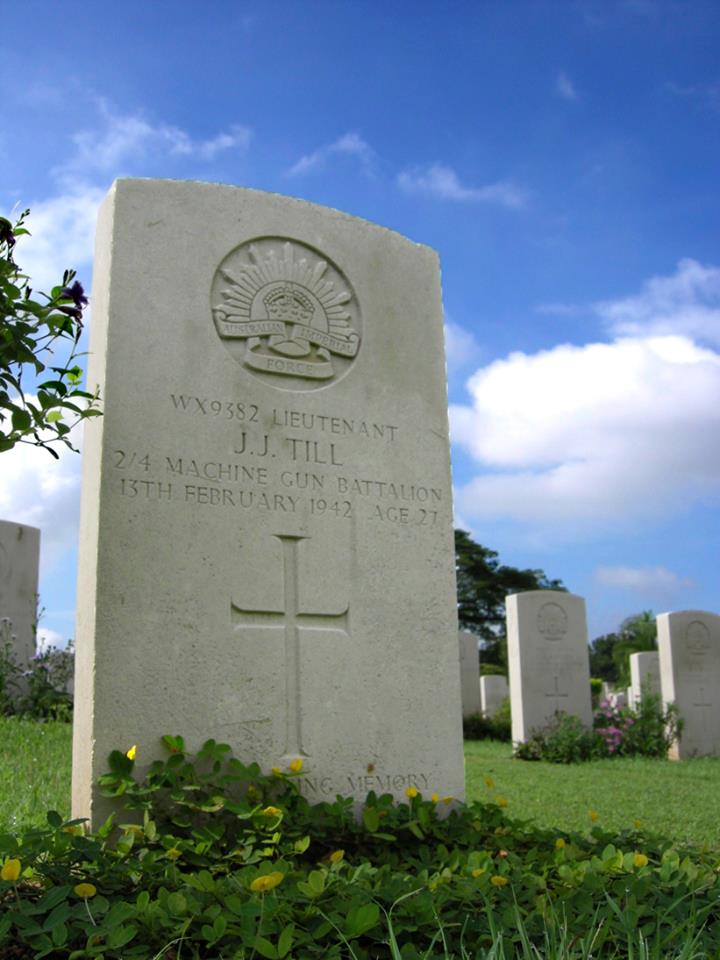
Lt Jimmy Till was an officer in Bert Sagger’s unit. He was buried near the spot where he was killed. This was near where today’s Ngee Ann Polytechnic Alumni Clubhouse stands. Picture is his grave now at Kranji War Memorial. (photo James Tann)
13th Feb 1942.
The noose tightens around Singapore City.
With the core of Singapore Island firmly in the hands of the Japanese Army, Gen.Yamashita moved his HQ from Tengah to the Ford Motors factory at Bukit Timah.
Strangely, the previous day ended somewhat with a lull in the fighting.
This allowed Gen Percival to continue finalising his last line of defence.
From Kallang Airfield to Paya Lebar, Paya Lebar to Braddell, Thomson Village to Adam Park, Adam Road to Farrer Road to Tanglin Halt, from Buona Vista across Pasir Panjang ending at Pasir Panjang Village.
The last unit to pull out , the 53rd Brigade, left Ang Mo Kio area around noon and the traffic along Thomson Road was so choked that Japanese planes had an easy time strafing the columns along the route.
Gen.Yamashita had actually feared that Gen.Percival would dig in and fight to the last.
In order to continue his feint, despite running low on ammunition and men, he launched attacks to give the British the appearance of Japanese strength.
He ordered the crack 18th Division to take Alexandra Barracks and the 5th Div & the Imperial Guards to attack the Waterworks at MacRitchie and the pumping station at Woodleigh.
Alexandra Barracks was the main British Army Ordnance Depot, where most of their equipment, stores and fuel storage, as well as the main Alexandra Military Hospital, were located
The attack on Alexandra Barracks began from Pasir Panjang (Kent Ridge) after 2 hours of heavy shelling at noon.
Waves of Japanese soldiers fought determined defenders from the 1st Malaya Brigade and the 44th Indian Brigade. Fighting was vicious and often hand to hand. The Malay Regiments were slowly overpowered with the Japanese winning height after height. The Gap, Pasir Panjang Hill III, Opium Hill, Buona Vista Hill, would fall one after the other but fighting would continue till the following day.
Over at MacRitchie, the Japanese 5th Division fought the 55th Brigade (1 Cambridgeshire & 4 Suffolk Regiments) to gain control of the reservoir. An all night tough fight including tanks forced the British Regiments all the way back to Mount Pleasant Road across Bukit Brown cemetery. The Suffolks lost over 250 men defending their ground.
The Japanese Army was now within 5 kilometres of the City on 2 fronts.
All this while, civilians casualties were mounting in the collateral damage from the Japanese shelling.
The City now had up to 1 million evacuees, most in dire straits without shelter, food nor water.
An Officer was to record travelling down Orchard Road:
“Buildings on both side went up in smoke…civilians appeared through clouds of debris; some got on the road, others stumbled and dropped in their tracks, others shrieked as they ran for safety. We pulled up near a building which had collapsed, it looked like a slaughter house; blood splashed, chunks of human being littered the place. Everywhere bits of steaming flesh, smouldering rags, clouds of dust and the groans of those who still survived.”
At the Battlebox, the new HQ at Fort Canning, Gen.Percival and his senior commanders were contemplating the latest orders from Gen.Wavell as well as an order from Churchill.
14th Feb 1942.
Prelude to Capitulation
Throughout the night of 13/14th Feb, sporadic skirmishes occurred both at Pasir Panjang and Adam Road.
At daylight 8.30am at Pasir Panjang Ridge , the Japanese charged up for a final assault on Hill 226 and Opium Hill facing heavy resistance from the 1st Malay Regiment. Bitter hand to hand combat lasted till 1.00pm in the afternoon when the Japanese gained control of the hills and in the process annihilating the Malay Regiment.
As the loss of the strategic ridge gave way, the Japanese advanced along Ayer Rajah in pursuit of Indian troops towards the British Military Hospital. It was then that the tragic incident occurred at the BMH with the senseless slaughter of wounded patients and medical staff.
There was also little relief along Adam Road. The Japanese, with Col Shimada’s Tank Regiment, pressured the line with a bulge through Bukit Brown, towards Caldecott Hill and Adam Park. Bitter fighting occurred around Hill 95 and Water Tower Hill (today’s Adam Park/Arcadia).
The Imperial Guards Division harried the eastern battle line at Paya Lebar and were near to capturing the Woodleigh pump station by mid day.
At British HQ in the BattleBox at Fort Canning, Gen.Percival conferred with his field commanders.
Brigadier Simson advised that the water situation was extremely grave with the threat of epidemic.
Gen Heath, commander of British Forces, and Gen Bennett, commander of Australian Forces, urged Gen Percival to surrender. Percival refused to yield, having direct orders from Churchill via Gen.Wavell, the Commander in Chief based at Java, not to surrender and to fight to the last man.
However, Gen.Percival informed Gen.Wavell that the enemy was close to the City and that his troops were no longer in a position to counter attack much longer.
Gen. Wavell sought permission from PM Churchill to allow Gen.Percival to consider the option of surrendering.
Churchill replied to Gen. Wavell:
“You are, of course, sole judge of the moment when no further result can be gained at Singapore., and should instruct Percival accordingly, C.I.G.S. concurs”
With that, the final key was inserted into play for Singapore. (But the permission for Percival to consider surrendering did not go out to Percival until the next morning of the 15th.)
*CIGS = Chief of Imperial General Staff
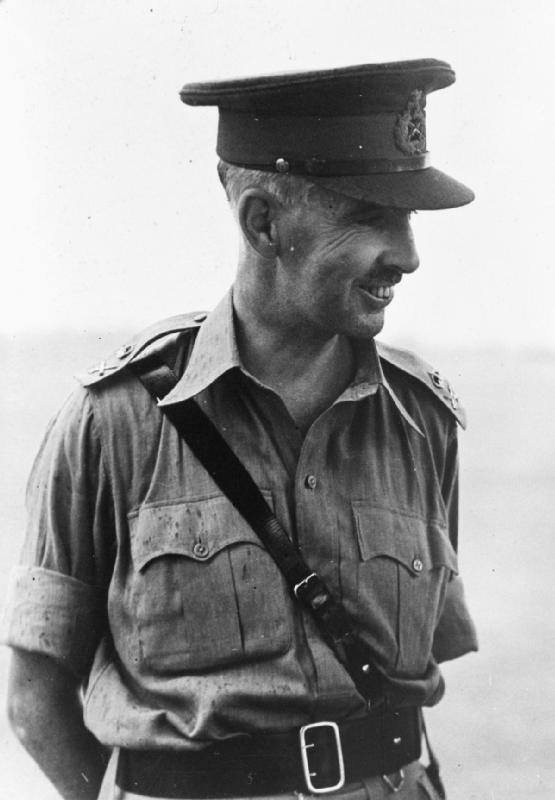
Lieutenant-General A E Percival, General Officer Commanding Malaya at the time of the Japanese attack.(photo Imperial War Museum London)
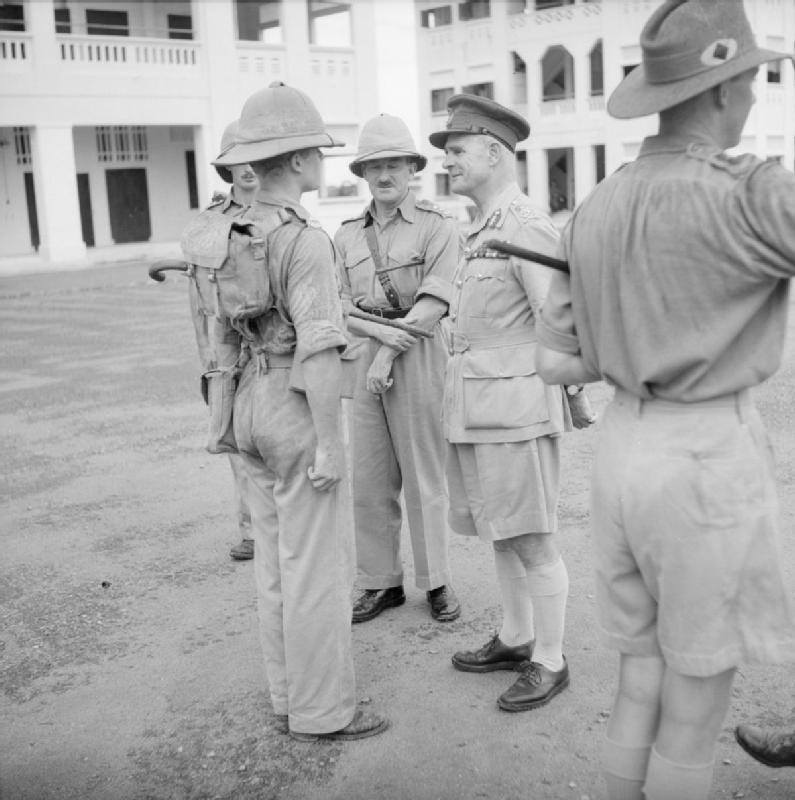
General Sir Archibald Wavell, C-in-C Far East, and Major General F K Simmons, GOC Singapore Fortress, inspecting soldiers of the 2nd Gordon Highlanders, Singapore, 3 November 1941. (photo Imperial War Museum London)
15th Feb 1942.
Chinese New Year – The Year of the Horse
There was absolutely no joy in celebrating Chinese New Year in 1942. The country was in shambles.
The foreboding fear of the encroaching Japanese military, preceeded by tales and rumours of their atrocities in China all portent the unknown that lay ahead.The British masters and their families had all bugged out. What did this mean for the locals now?
A Japanese flag could he seen flying from the top of the Cathay Building! Was this the end?
For the locals, especially for the Chinese, it was going to be the start of three and a half horrifying years.
Morning of 15th Feb saw the opposing forces holding most of their ground, with infiltration mainly by the Japanese within the eastern sector reaching Kallang Airfield. In the west, Japanese troops reached Mount Faber.
Gen. Percival convened his most senior officers at the Battlebox at 9.30am for the latest status reports.
Brigadier Simson reported that water supply could not be maintained for more than a day due to breakages everywhere which could not be repaired. Water was still flowing despite the pumps and reservoir being in enemy’s hands!
The only fuel left were what remained in each vehicle and at a small pump at the Polo Club.
Reserved military rations could last for only a few more days.
With unanimous concurrence of all present, the decision to cease hostilities and to capitulate was made.
A deputation comprising Brigadier Newbigging, HQ Chief Admin Officer, the Colonial Secretary Mr Fraser and Major CH Wild as interpreter, left Fort Canning for the enemy lines at Bukit Timah Road.
At the junction of Farrer Road, they proceeded on foot with Union Flag and a white flag across the defence line for 600 yards where they were met by the Japanese soldiers. They were later met by Col Sugita who refused their ‘invitation’ to the City for negotiations. Instead, Col Sugita demanded that Gen.Percival was to personally surrender to Gen.Yamashita.
To acknowledge this condition, the British were to fly a Japanese Flag from the top of the Cathay Building.
At 5.15pm, the British surrender party drove up to the Bukit Timah Ford Motors factory.
The delegation was made up of Lt-Gen AE Percival, Brigadier Newbigging, Brigadier Torrance, Gen Staff Officer Malaya Command, and Major Wild, the interpreter from III Corps.
Though Gen.Percival tried to negotiate for some terms for his men, Gen Yamashita thought that he was playing for time and pressed Percival for an unconditional surrender, telling him that a major attack on the City was scheduled for 10.30pm that night and any delay, he might not be able to call off the operation in time.
“The time for the night attack is drawing near! Is the British Army going to surrender or not?”
Banging the table he shouted in English “Answer YES or NO.”
At 6.10 pm. Gen.Percival signed the surrender document, handing Singapore over to the Japanese Empire.
************************
Read about the Battle at Bukit Brown on 14 February, 1942, a day before the surrender to the Japanese, here
And the latest on missing soldiers here
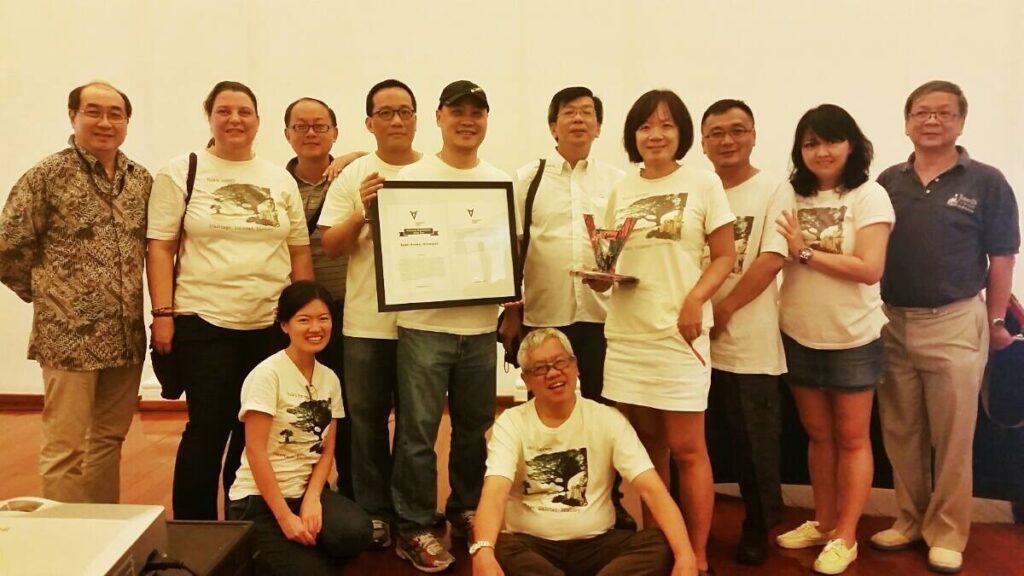
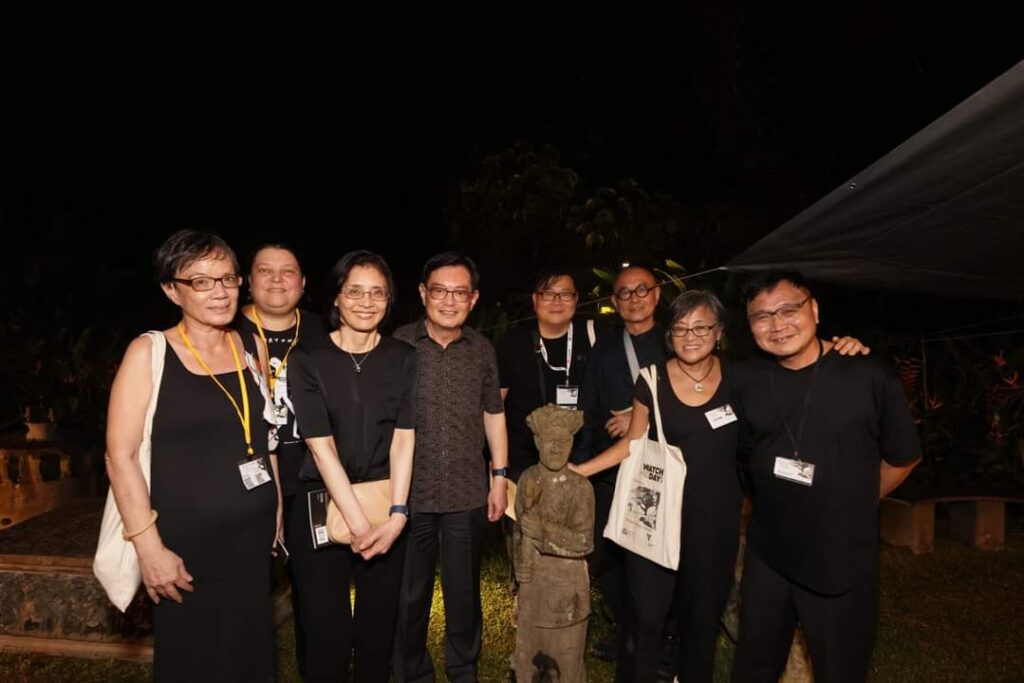
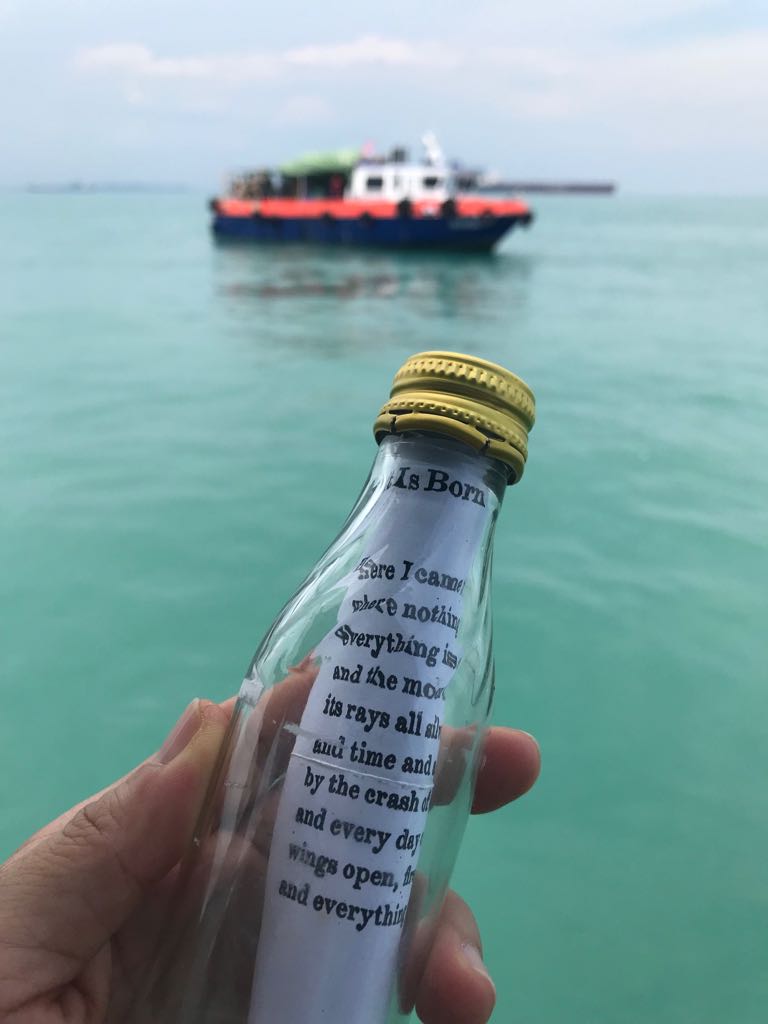

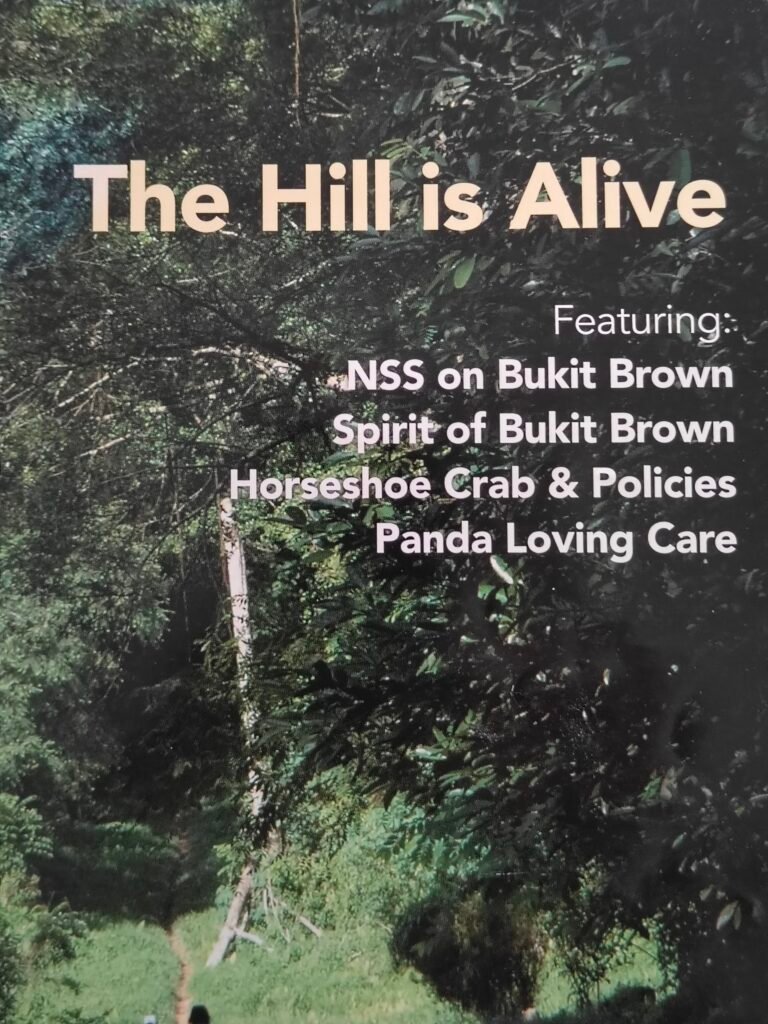


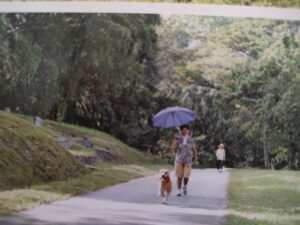

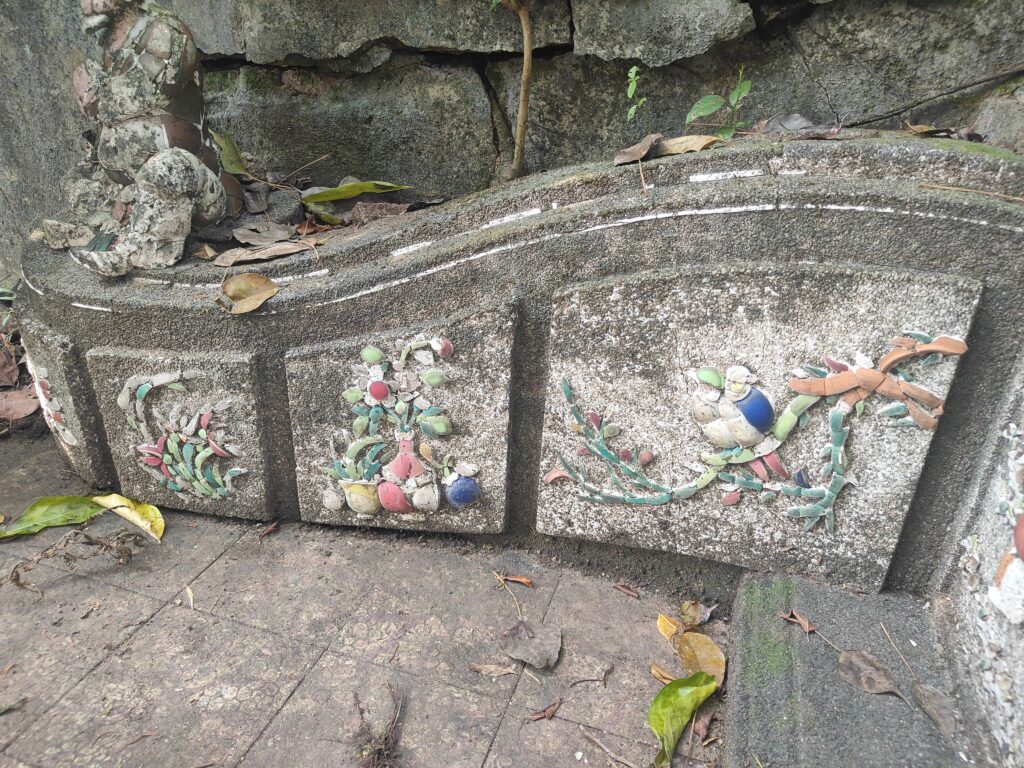
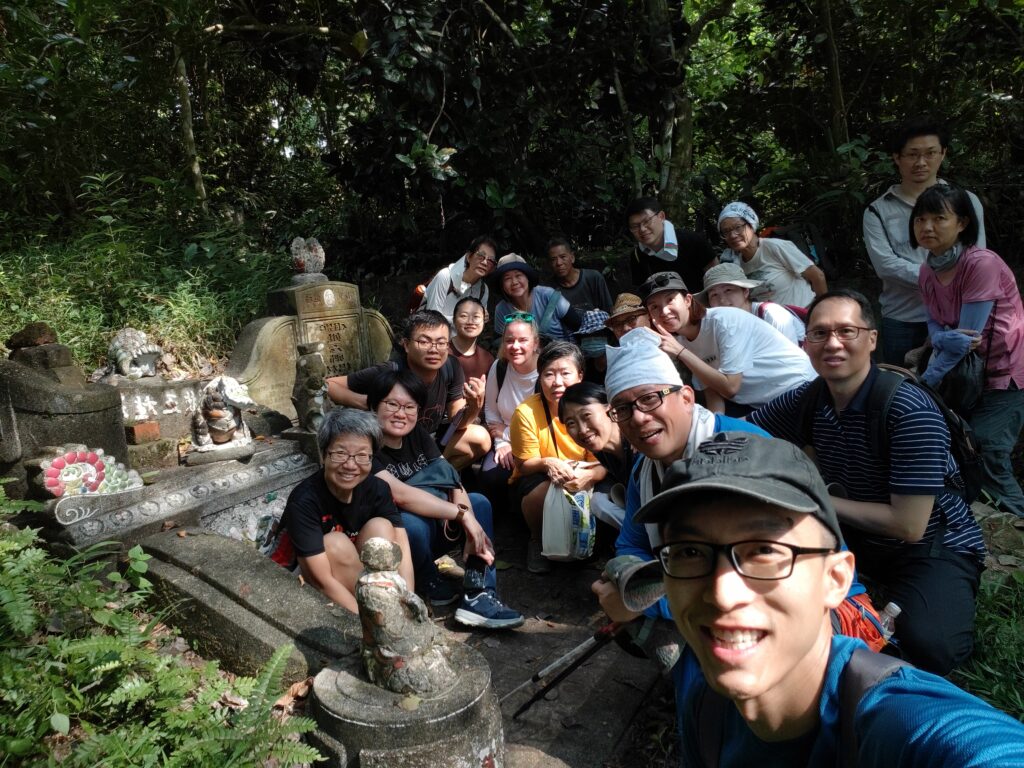
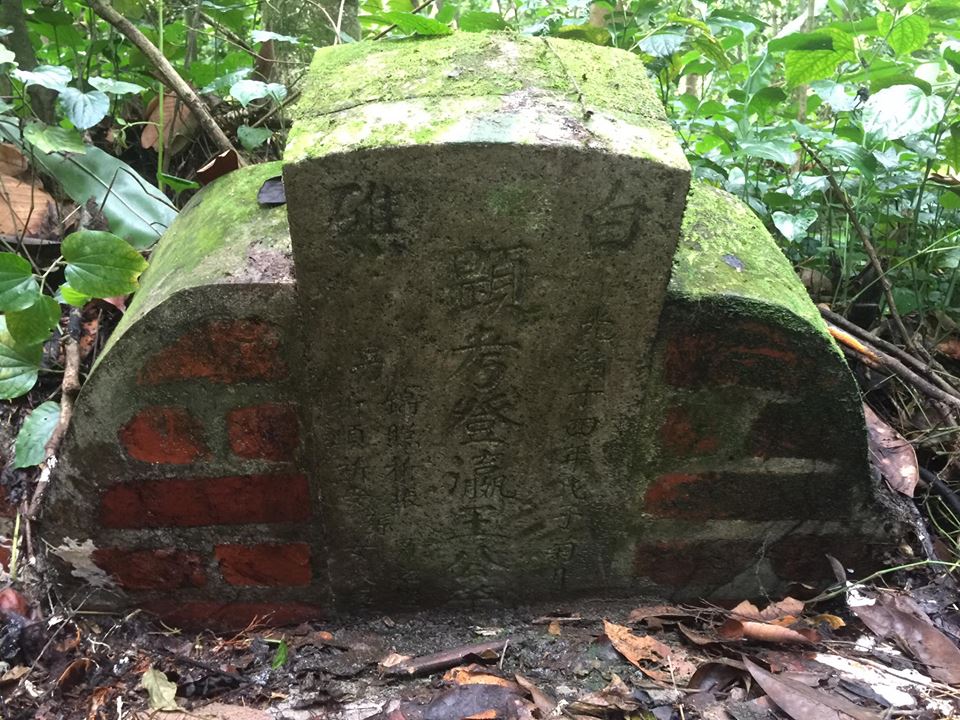
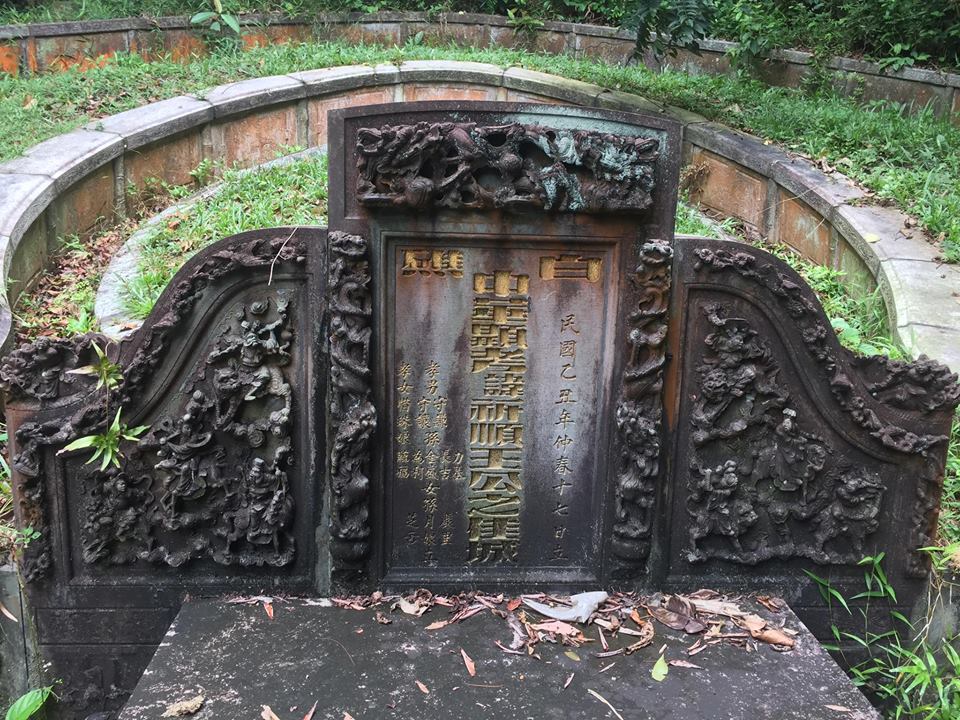

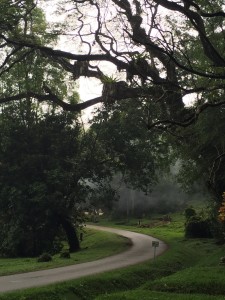
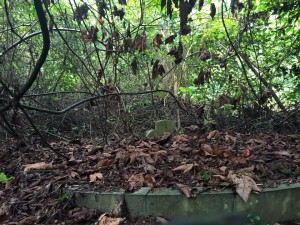
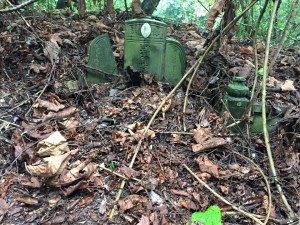
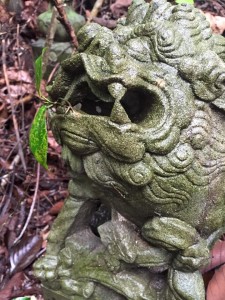
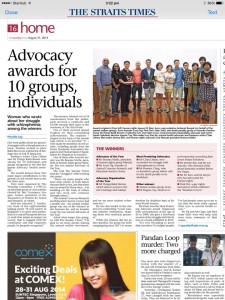
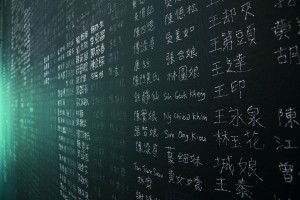
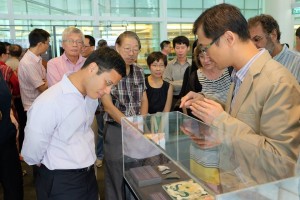


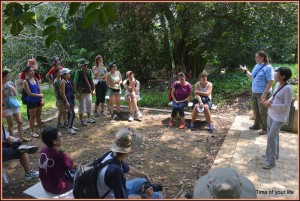

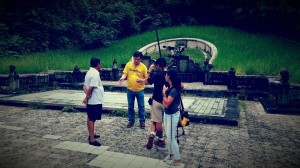

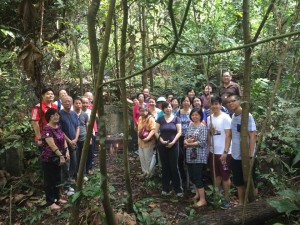
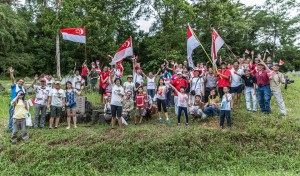
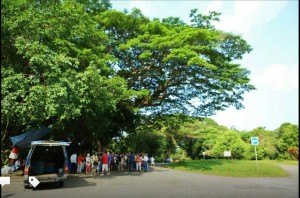
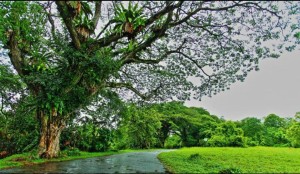

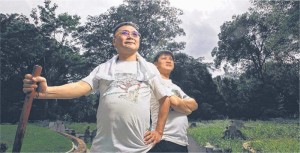
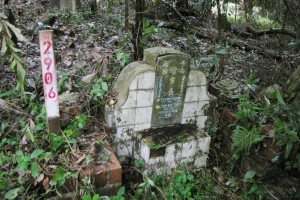
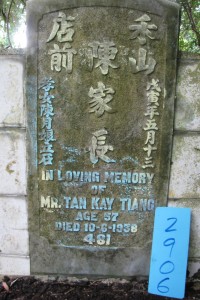

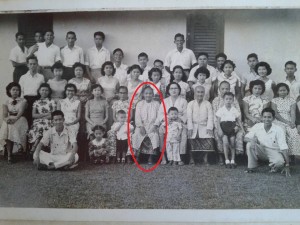

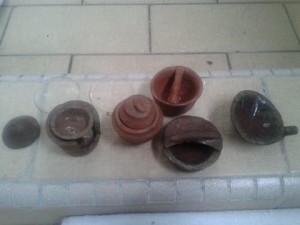
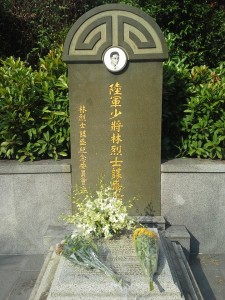
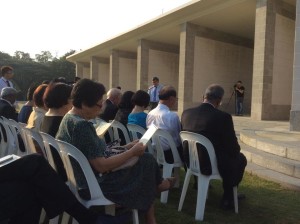
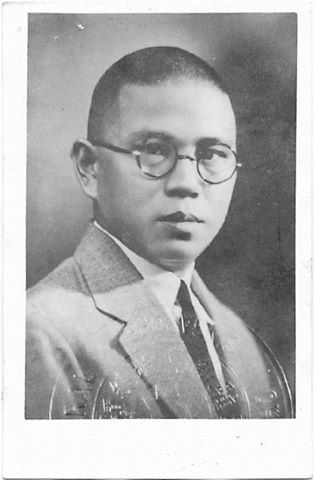
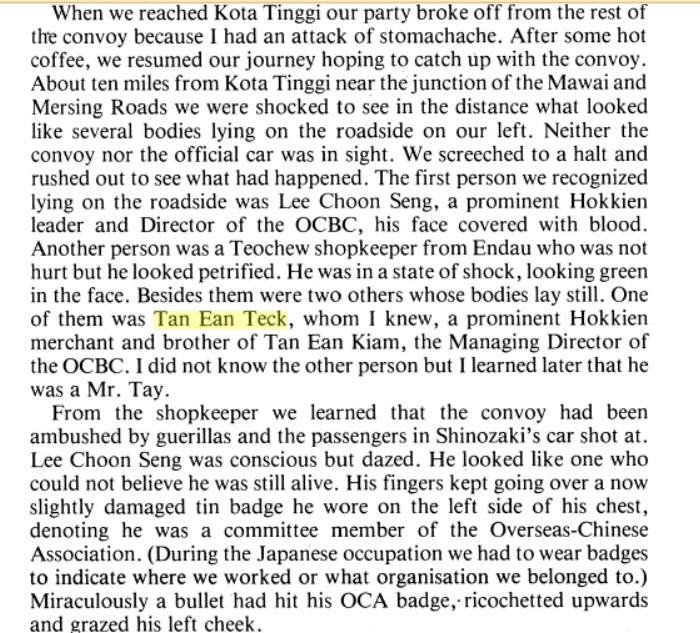


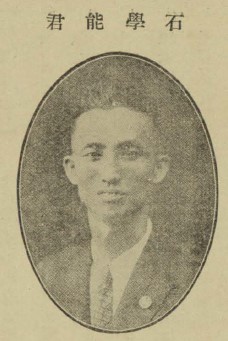




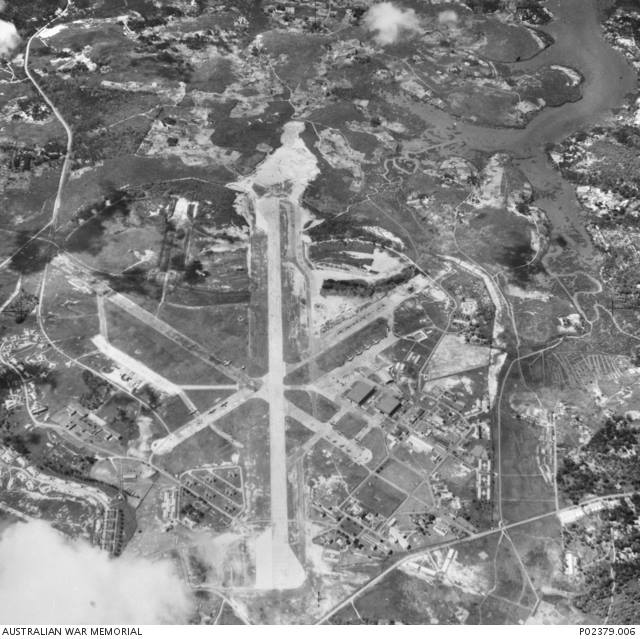

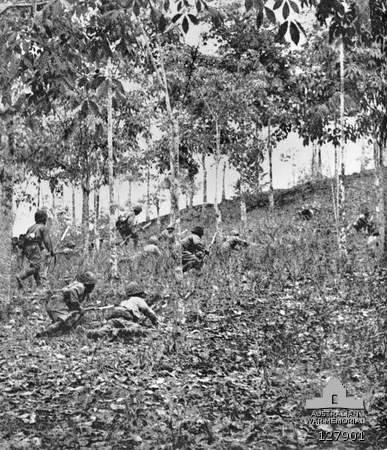

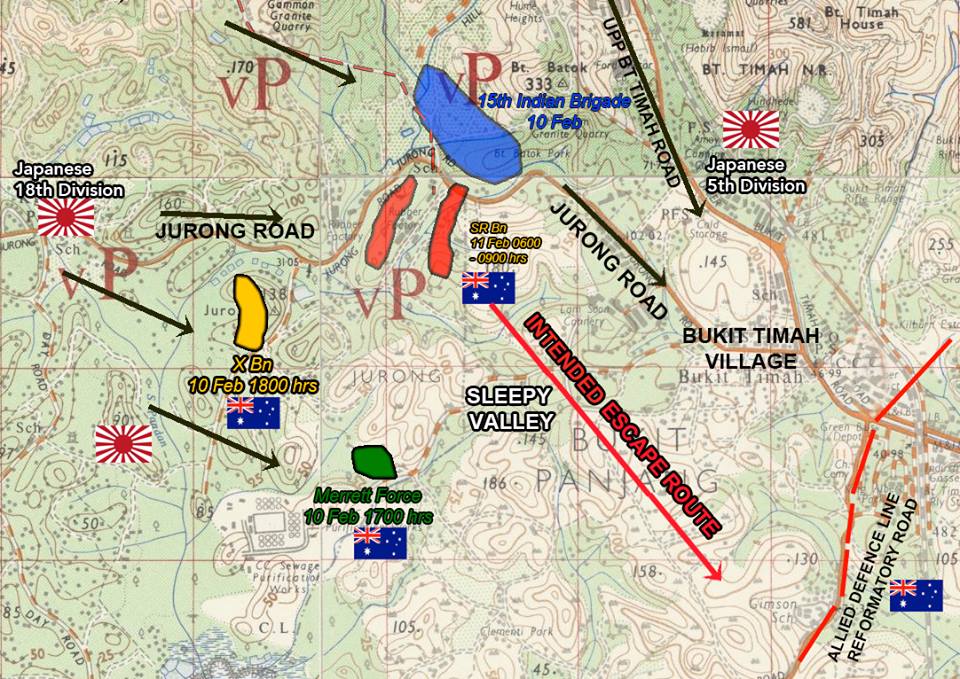
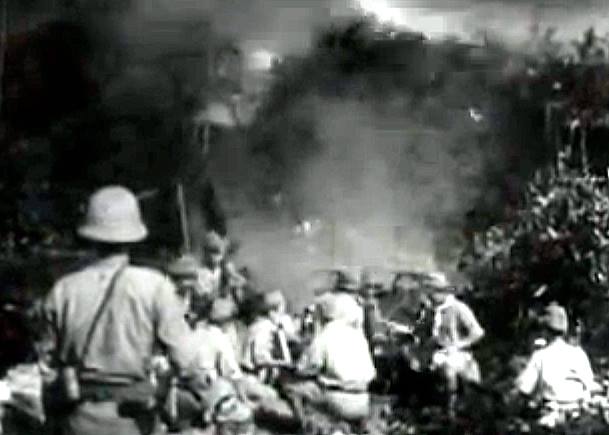



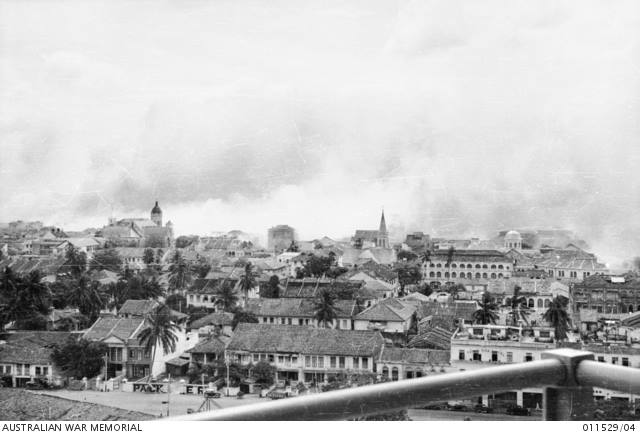

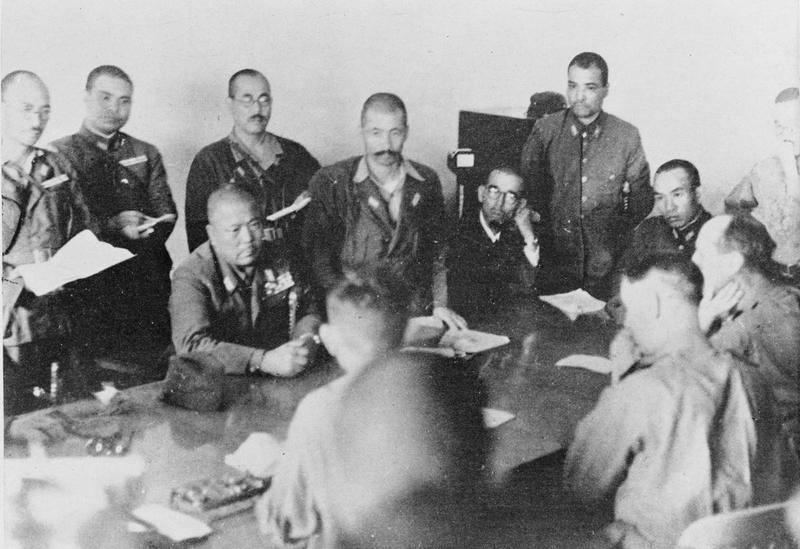
Recent Comments